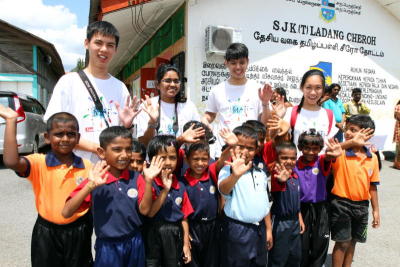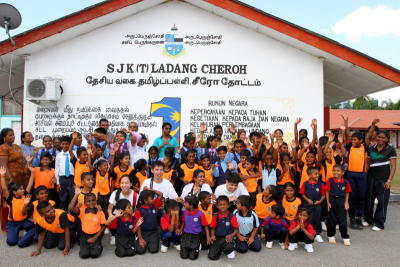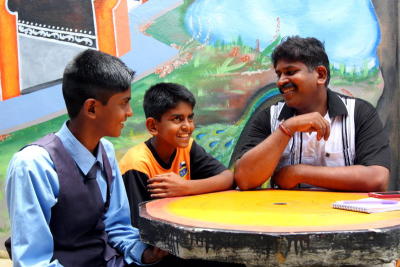JUST outside an oil palm plantation in the small town of Cheroh, Pahang, lies a small Tamil school, SJK (T) Ladang Cheroh. It has four small buildings in its compound, and just over 70 students. All in all, it’s a pretty plain sight that most people would probably miss when driving by this town.
However, if you speak to some of the locals, you’ll find that this small school has quite a big history.
It was established in an altogether different time, when Malaysia was still under colonial rule.
The British controlled most of the plantations, and since the workers at the time were mostly Indians, they set up a Tamil school specially for children of the workers.
Though it is now but a fading legacy of that bygone era, the teachers and students still feel a strong connection with the history of the school.
Headmaster Karunnanithy Letchumanan, 48, said: “It is a very small school, a very simple place. But a lot of our former students come back to visit because they love the school. Quite a few of our teachers are former students as well.”
Back in the 1940s, when the British converted a small medicine distribution centre into the school’s first classroom (which is still standing today), all the students were children of plantation workers.
These days, only a handful of students have parents working in the plantations. Most of the plantations in the area hire foreign workers. Also, the plantations used to be mostly for rubber. Over the years, they have become almost completely replaced by oil palm, which produces better yields and is much easier to cultivate.
Sasitharan Narayanan, 32, a former student who is now a teacher at the school, has fond memories of his childhood in Cheroh.
“All the children all used to play together in the plantation. We would make balls out of the rubber scraps and throw them at each other!” he said. “Our lives were very simple, but we were always happy.”
Sasitharan is also proud of how successful some of his schoolmates have been since graduating, especially given the lack of facilities in the school.
With the help of ex-students and the government, a new building was added to SJK (T) Ladang Cheroh in 2010. Finally, after so many decades of operating from two tiny old buildings, the school had some modern facilities. It now has a Living Skills workshop, computer lab and science lab.
In the same year, the school organised a reunion. Karunnanithy laments the fact that so many ex-students have left Cheroh, but seeing them return to do their bit for the school was a great encouragement.
Sivakumar Ramasamy, 41, is one of the few ex-students who has not only remained in Cheroh, but also still works in the plantations.
When asked about the best memory he’s had in the school, Sivakumar said it was the time his daughter scored 5 A’s in the UPSR examination a few years ago. Two of his sons, Kalaiyarasan Sivakumar, 12, and Anbarasan Sivakumar, 11, are currently studying in the school.
“I want my children to study hard so they can be successful. I always remind them that education is important,” said Sivakumar. His sons hope to make their father proud by realizing their ambitions to become an engineer and a policeman.
But whatever the ambitions of the students at SJK (T) Ladang Cheroh are, the oil palm trees just beyond the school fence will always serve as a reminder of where this humble institution has come from, and the many success stories it has inspired.




Tell us what you think!